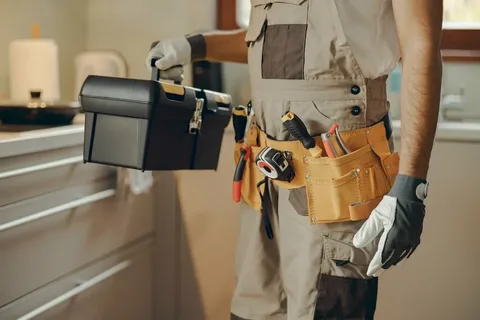How to Design Custom Food Boxes That Increase Sales

In the competitive food industry, packaging plays a crucial role in attracting customers, building trust, and influencing buying decisions. Custom food boxes are more than simple containers—they communicate freshness, safety, quality, and brand identity. When designed strategically, they not only enhance product presentation but also increase sales both online and in-store.
This guide explains how to design custom food packaging that boosts visibility, improves customer experience, and drives more conversions.
Why Food Packaging Design Matters
Customers often make purchase decisions within seconds, and packaging is the first thing they notice. A well-designed food box instantly communicates value and influences how shoppers perceive taste, freshness, and overall product quality.
Great packaging can:
- Increase shelf appeal
- Enhance brand recognition
- Protect food during transport
- Improve customer satisfaction
- Encourage repeat purchases
That’s why investing in custom food box design is one of the smartest moves for modern food brands.
Understand Your Target Audience
Effective packaging starts with understanding who you’re selling to. Families, health-conscious consumers, fast-food lovers, and premium buyers all respond to different design styles.
Consider factors such as:
- Age range
- Lifestyle
- Eating habits
- Product expectations
- Budget
For example, eco-conscious buyers prefer kraft food boxes, while luxury dessert brands lean toward rigid boxes with foil printing.
Choose the Right Packaging Material
The material you select determines how well your food is protected and how your brand is perceived. Different food products require different packaging types.
Popular Materials for Custom Food Boxes
- Kraft paper – Eco-friendly, rustic, and ideal for organic food brands
- Cardboard – Lightweight, customizable, and cost-effective
- Corrugated board – Strong and great for delivery or heavy food items
- Rigid boxes – Luxurious and suitable for premium desserts or gift items
- Food-grade paper – Keeps edible products safe and fresh
Selecting the right material ensures your food stays intact, appealing, and safe.
Prioritize Food Safety and Freshness
Safety is non-negotiable in food packaging. Use food-grade coatings, moisture-resistant linings, and airtight designs when necessary.
Important considerations:
- Leak-proof construction
- Odor-free materials
- Tamper-evident seals for trust
- Proper ventilation for baked goods
- Heat-resistant packaging for hot foods
Packages that guarantee freshness build customer loyalty and encourage repeat orders.
Boost Shelf Appeal with Strategic Branding
Branding is one of the most powerful tools in packaging. Custom food boxes should clearly reflect your brand’s personality.
Brand Elements to Include
- Logo
- Brand colors
- Tagline
- Product name and description
- Nutritional information
Choose clean, visually appealing designs that help customers recognize your brand instantly.
Use High-Quality Printing Techniques
Eye-catching printing creates a strong first impression and helps your product stand out.
Top printing choices include:
- CMYK printing for vibrant colors
- Foil stamping for premium accents
- Spot UV for contrast and shine
- Embossing/debossing for texture and luxury
Good printing elevates ordinary packaging into memorable brand experiences.
Add Functional Features
A great design balances aesthetics and usefulness. Functional food packaging improves convenience and enhances customer satisfaction.
Useful features include:
- Easy-carry handles
- Resealable closures
- Window cutouts to show food
- Compartments for meal boxes
- Microwave-safe or reheatable containers
These small enhancements can significantly increase perceived value.
Focus on Eco-Friendly Packaging Options
Sustainability has become a major purchase driver. Many consumers are willing to choose brands that offer recyclable or compostable packaging.
Popular eco-options:
- Kraft food boxes
- Recyclable cardboard
- Compostable papers
- Minimalist designs with less ink
Sustainable packaging improves brand trust and appeals to eco-conscious buyers.
Incorporate Clear Product Information
Customers want transparency, especially with food. Make sure your custom boxes include:
- Ingredients
- Allergen warnings
- Nutritional facts
- Expiry dates
- Storage instructions
Clear labeling reduces customer hesitation and increases sales.
Create a Memorable Unboxing Experience
Unboxing isn’t just for luxury products. Even food boxes can leave a positive impression when designed creatively.
Add elements like:
- Custom inserts
- Branded tissue paper
- Thank-you notes
- Unique opening styles
Memorable packaging fosters loyalty and encourages social media sharing.
Optimize Box Design for Shipping and Delivery
With more customers ordering food online, strong and stable delivery packaging is essential.
Consider:
- Cushioning for delicate items
- Tight-fit designs to prevent spills
- Temperature-control features
- Sturdy corrugated boxes for shipping
Better delivery packaging equals fewer returns and happier customers.
Conclusion
Designing custom food boxes that increase sales requires a thoughtful approach combining aesthetics, functionality, and brand identity. When done right, packaging becomes a powerful tool that influences buying behavior, strengthens your brand image, and enhances the overall customer experience.
Strong visuals attract customers, clear information builds trust, and high-quality materials ensure safety and freshness—ultimately leading to more sales and long-term brand loyalty.
Investing in custom food packaging is more than a design decision—it’s a strategic move that boosts your market presence and sets your brand apart from the competition.


